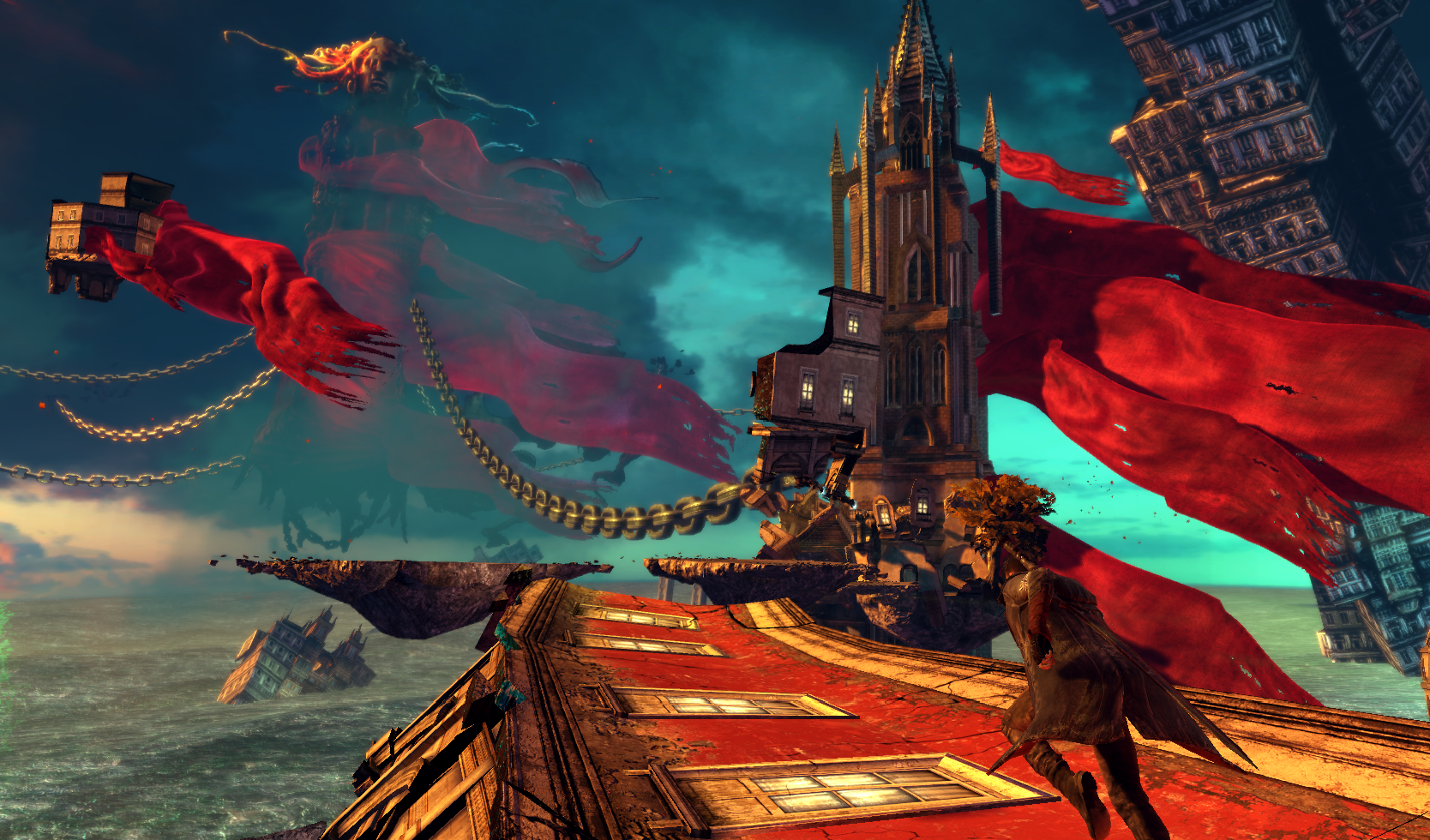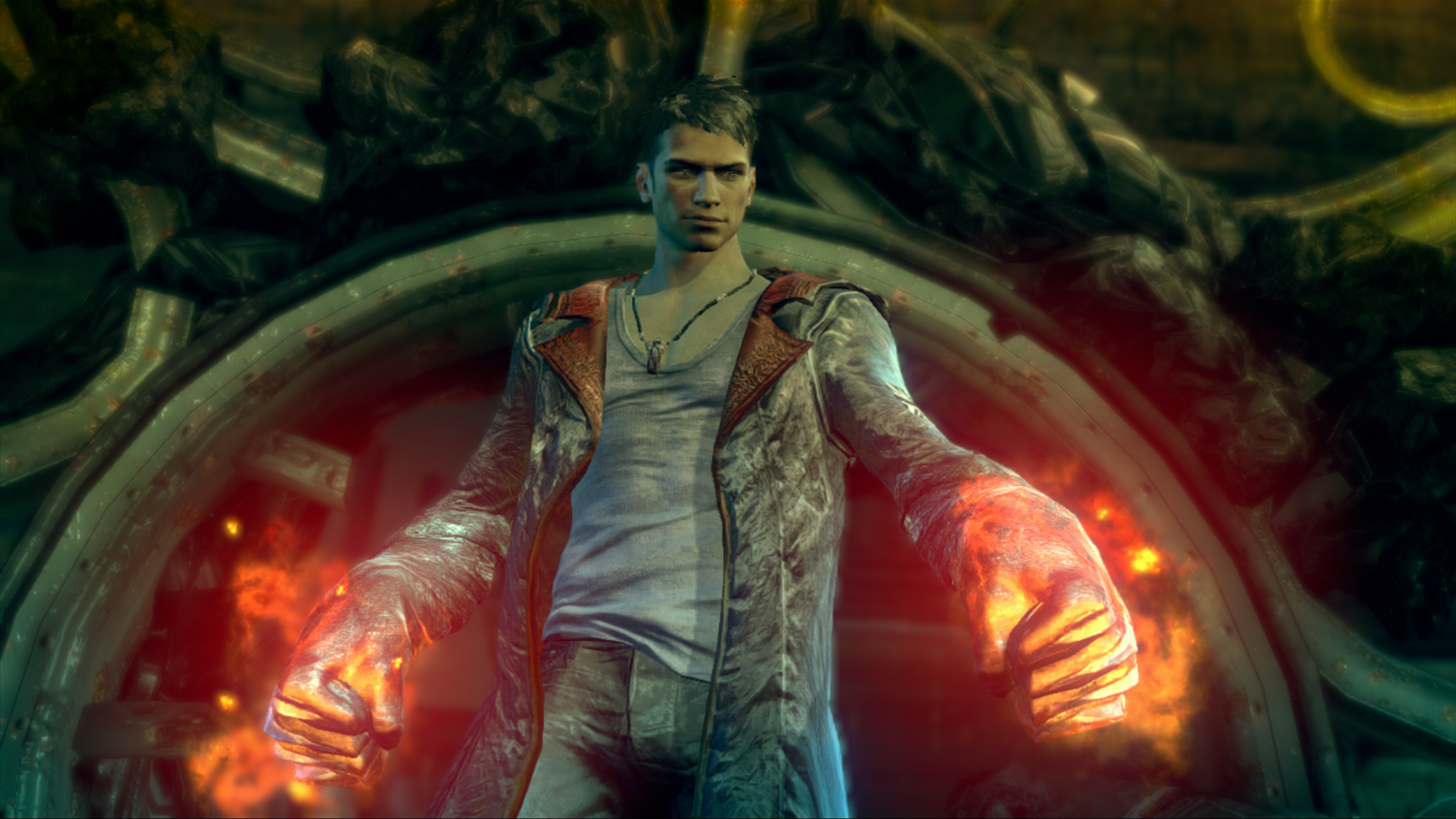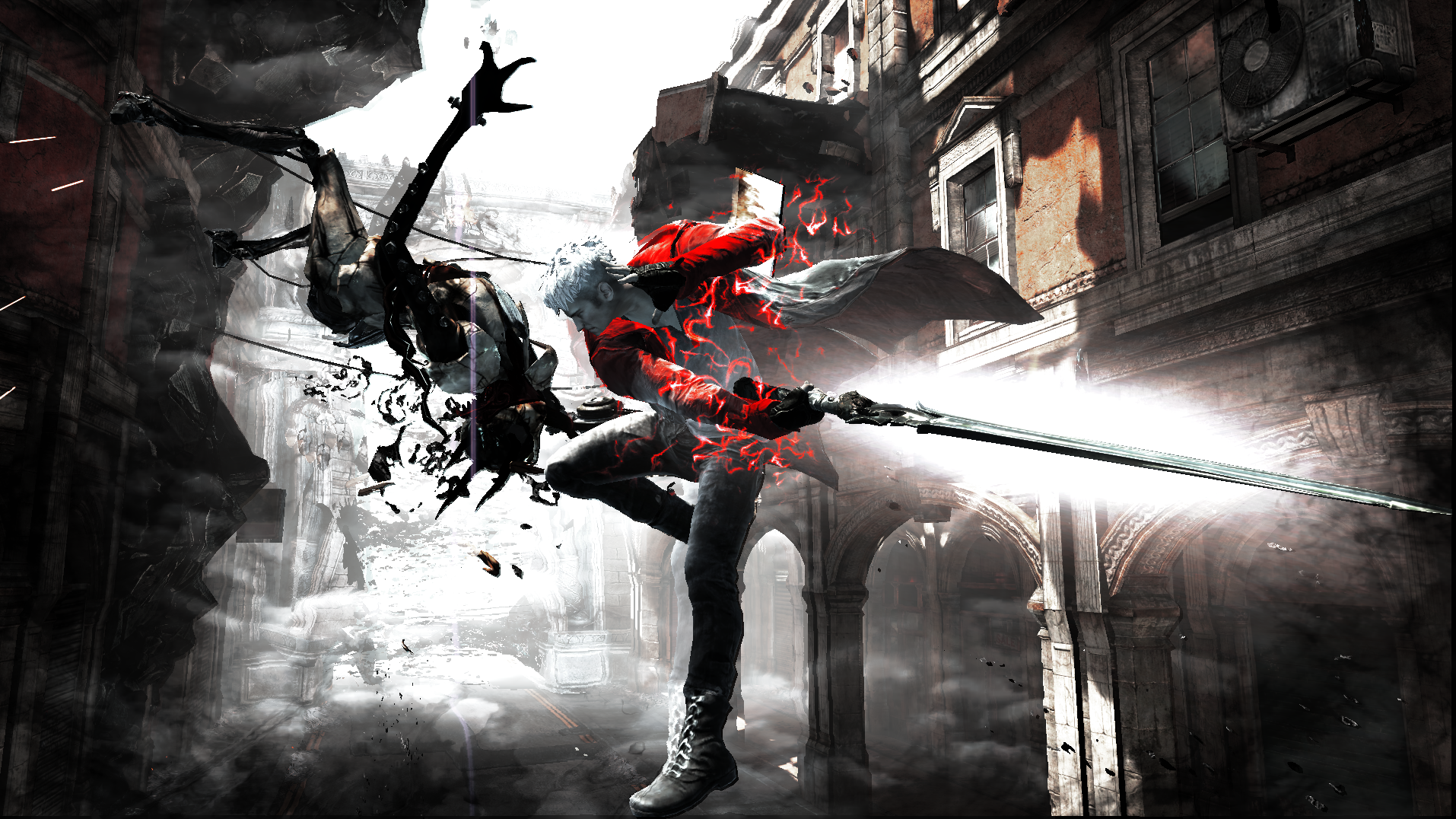If you’re the sort of person who scrolls to the end of a review after skimming the first few paragraphs, you’re in for a mild shock. The reason being, we’ll be using those opening salvos to get all the unappreciated facets of DmC: Devil May Cry out of the way. And while we feel it is a game worth bothering about, it isn’t exactly perfect. So let’s get the nasty bits out of the way first, shall we?
First up, you cannot hardlock or focus on a single enemy, so the combat isn’t as accurate as it should be. So if you’re a fan of modern-day hack and slash adventures such as Bayonetta, don’t expect the feeling of stabbing a demon in the face to be remotely close. There are no taunts, nor is the series’ trademark style system present either. Purists might find it slow and imprecise and chide the fact that shrewd abuse of the game’s combat mechanics will allow for an inflated end-mission rank.
To add to this, the game has you indulging in a lot of platforming. We mean it to be an indulgence in the least possible way. Sure, traversing across the twisted landscape of Limbo City is a dream, but that’s after you get used to using a different combination of buttons to move from one crumbling pile of rubble to the next, with one set of inputs to pull platforms towards you and another to pull you towards them, with a third allowing you to glide across. The camera doesn’t do it any favors either. Expect to spend more time than you’d like attempting to jump between two seemingly close platforms, with each failed attempt shredding away at your health. It isn’t smooth at all to begin with but gets tolerable as you go along.
On the eyecandy front, the graphics are a step down. Gone is the shine of Capcom’s gorgeous MT Framework that made DMC4 and current-gen Resident Evil games look so damn good. In its place is Unreal Engine 3. While it looks serviceable, it’s a downgrade from the gleam and polish of Capcom’s titles produced in-house. There are quite a few rough edges, what with the low resolution textures and the aching 30 fps too. And though the PC version should be the best of the bunch (60 fps, Steamworks), if you had to choose between the PS3 and X360 editions, we’d give the nod to playing it on Microsoft’s box as it ends up looking a bit better and plays smoother too.
That more or less sums up the game’s negatives. Some of you might wonder, “OMG, YOU NEVER MENTIONED DANTEZ TWILIGHT LOOKZ!” The fact is, it isn’t anything new, and quite frankly, we’re not interested in comparing a video game to teenage sparkly vampire romance unless it was a video game about teenage sparkly vampire romance. Without spoiling much, it’s safe to say that Ninja Theory’s re-imagining of Dante fits the universe they’ve created quite well. Having said that, there are a ton of reasons to play DmC.
While the combat is maybe not as fluid as it was in earlier games, that doesn’t take away from the fact that it’s a lot of fun to play. The sheer spectacle of launching an assortment of demonspawn in the air with your sword and riddling their bodies with a hailstorm of bullets only to slice them to pieces with a giant axe never gets old. In terms of variety, it’s near endless, and it’s always entertaining. Compared to Ninja Theory’s earlier attempts at combat, DmC by far outshines both Heavenly Sword and Enslaved: Odyssey to the West. It’s a visceral, entertaining, and wonderfully enjoyable experience.
Apart from this, the premise is pretty sweet. Limbo City ends up being a modern-day parody of the world as we know it, replete with scumbag corporations, enough camera surveillance for an Orwellian wet dream, and a media network that makes Fox News seem unbiased. All of this is controlled by Mundus, who looks like a senile banker rather than the demon lord that he is. Responsible for the death of Dante’s mother and the eternal torture of his father, he’s the Joker to your Batman. Along the way, you’ll meet members of a local resistance, get reunited with your brother, and find out more about your origins. And in spite of some of the dialogue being nothing more than a wanton exchange of four-letter expletives, it manages to be right at home with the rest of this bizarre fiction. It makes for an intriguing narrative that keeps you playing to see where it all goes.
And it goes rather well, we might add. This adventure is well-paced, and the unlocking of new features happens at a steady clip too. There’s more than enough going on to keep you interested. From laying the smackdown on a millennia-old succubus at the depths of a cola factory to negotiating teleporting, parrying demons in a nightclub, there’s a lot of variety to keep you playing (complete with dubstep if that’s your jam). This extends to the environment as well. There was next to no backtracking, and each level was different from the next. The art direction is solid and picks up the slack just when you’ve had enough of the so-so graphics or irritating platforming segments.
On the whole, DmC: Devil May Cry comes with its fair share of trade-offs. The characters and plot are a step up from Capcom’s usual one-dimensional fare, but there’s a distinct lack of over the top moments (as we’d come to expect from a series of this calibre). Though the combat isn’t as fast-paced or precise as the earlier games, it ends up being a lot more entertaining to cut through swathes of enemies, and chaining together insane combos is easier. From a technical standpoint, it is a tad unnerving, but the art style more than makes up for it. All of these checks and balances result in a game that isn’t the pinnacle of hack and slash evolution, instead, you’re treated to a diverse experience that manages to be better than expected, making it well worth the price of admission.
WHAT’S ILL
- Crowd-control combat at its finest
- Spectacular art direction
- interesting take on the series
- well-paced with next to no backtracking.
WHAT’S NOT
- You can’t lock on specific enemies.
- Platforming is hit or miss.
- Not as technically polished as DMC4.
RATING
- Gameplay Progression: 8/10
- Graphics: 7/10
- Sound: 8/10
- Unique Selling Proposition: 9/10
- illFactor: 9/10
Final Score: 8.3 – iLLuminant
Additional info:
Platforms: Playstation 3, XBOX 360, PC
Release Date: 15/1/2013 (consoles), 25/1/2013 (PC)
Genre(s): Hack and slash, beat ’em up
Publisher: Capcom
Developer: Ninja Theory
Rating: PEGI 16













